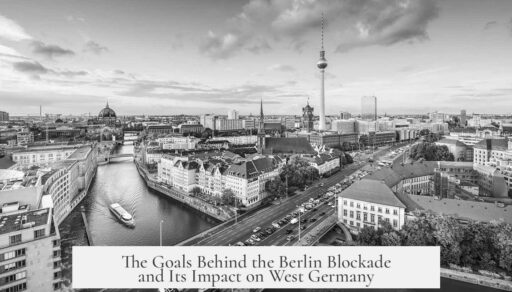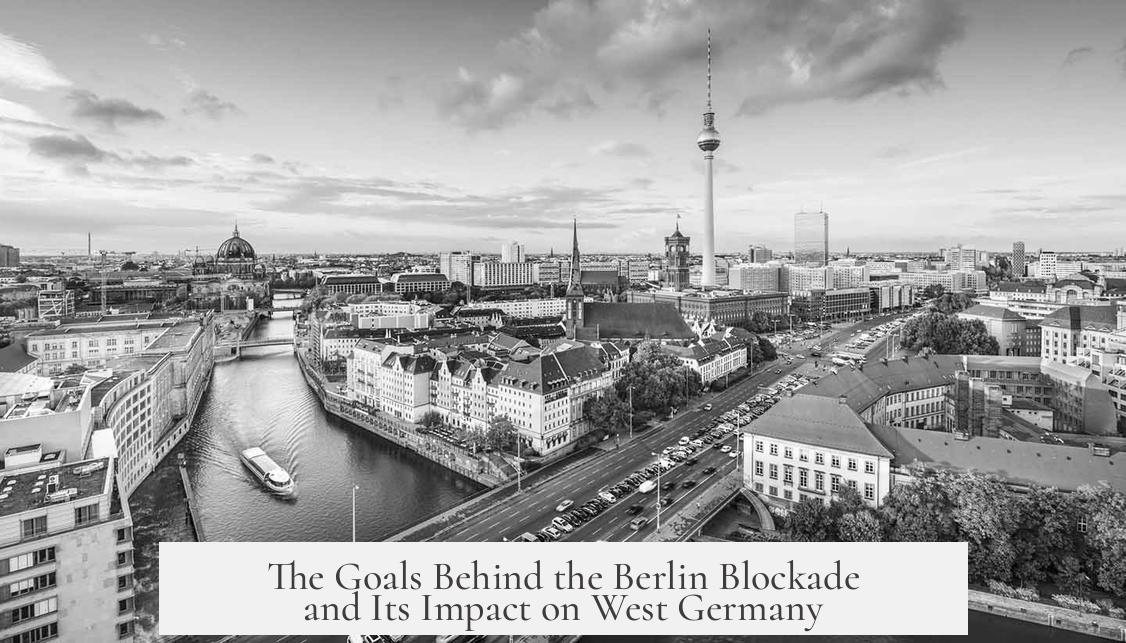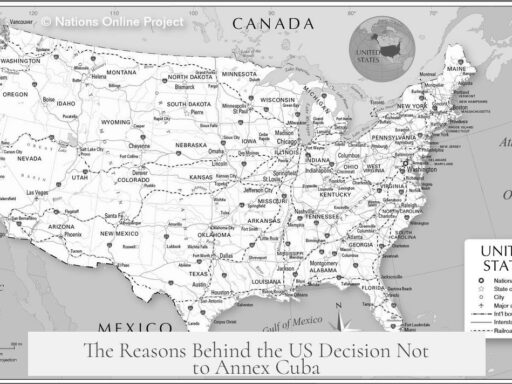The goal of the Berlin Blockade was to weaken Germany, prevent Western influence, and obstruct the creation of a separate West German state by cutting off Allied access to West Berlin. The Soviet Union aimed to maintain control over post-war Germany and limit Western powers’ ability to establish a strong presence within the Soviet-occupied zones.
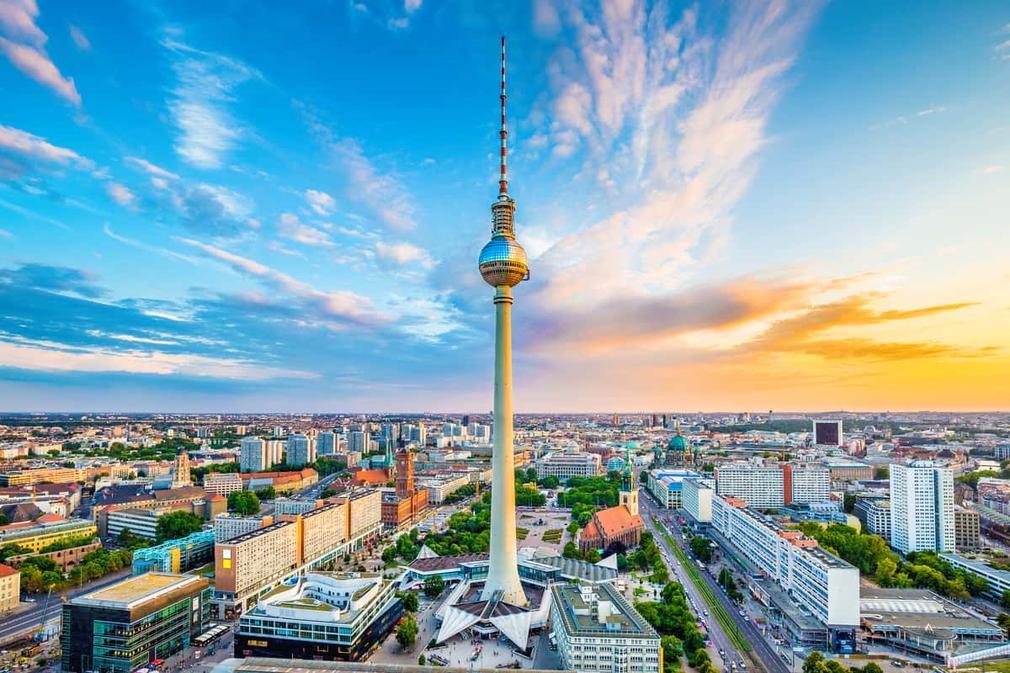
After World War II, Germany was divided into zones controlled by the Allies. Berlin, deep inside the Soviet zone, became a focal point. The Soviets feared that Western influence in Berlin threatened their control and recovery efforts. Stalin saw West Berlin as a Western foothold that could inspire resistance and undermine Soviet authority in the eastern part of Germany.
The blockade began in 1948 when the Soviets cut off all road, rail, and canal transport routes into West Berlin. The action aimed to force the Allies to reverse currency reforms and abandon plans to create a distinct West German state. The introduction of the Deutsche Mark by Western powers threatened Soviet plans since it represented economic stability and independence for West Germany, undermining the Soviets’ goal of keeping Germany economically unstable with a debased Reichsmark.
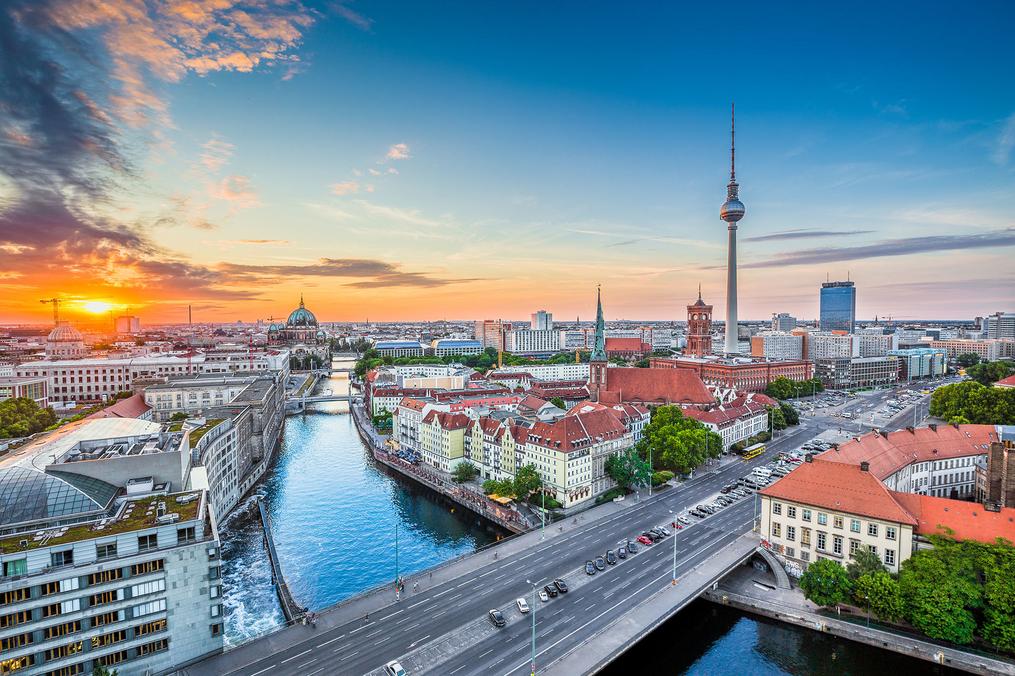
By blocking supplies such as food, water, and electricity, the Soviets hoped to lower morale and force Western withdrawal. Stalin also sought to demonstrate Western weakness; he believed the Western powers would fail to sustain West Berlin without direct land access. Success for the Soviets would strengthen their image and might encourage smaller European nations to align with the Soviet Union.
The Western powers responded with the Berlin Airlift, transporting supplies by air. This effort thwarted Stalin’s plan, as the blockade could not force the Allies out of the city despite economic and logistical difficulties.
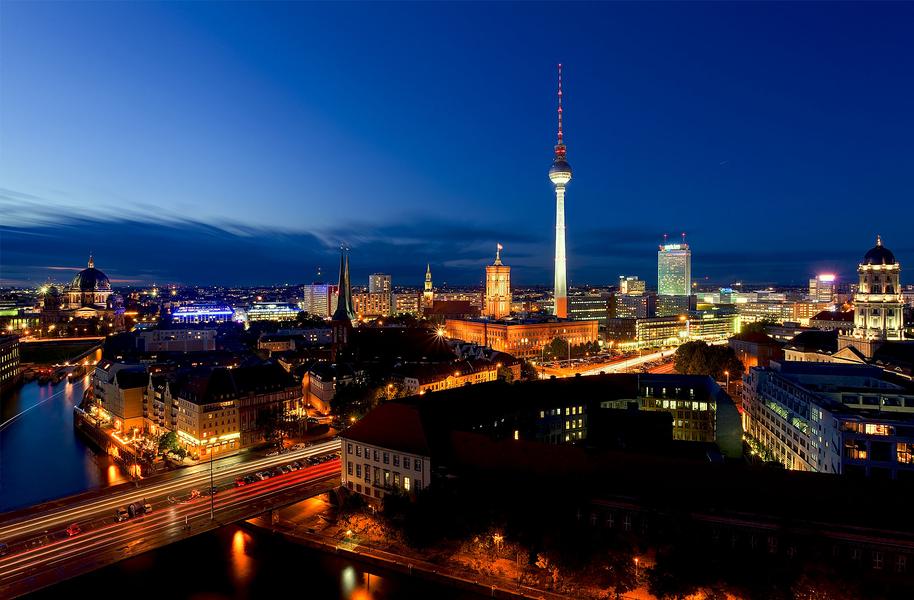
Some historians offer alternative interpretations. For example, Pavel Sudoplatov suggested the blockade also served to distract the West from Mao Zedong’s victories in China, highlighting Stalin’s broader geopolitical intentions.
- The blockade aimed to keep Germany weak and prevent a Western-backed West German state.
- Soviets cut off supply routes to force Allied withdrawal and reverse currency reforms.
- Stalin wanted to demonstrate Western inefficiency and bolster Soviet influence.
- The Western Berlin Airlift successfully countered the blockade.
- Some view the blockade as a strategic distraction during Mao’s rise in China.
The Goal of the Berlin Blockade: Why Stalin Tried to Starve Out the West

The goal of the Berlin Blockade was to force the Western Allies out of Berlin by cutting off all routes of supply, thereby preventing the formation of a separate West German state and undermining Western influence in eastern Germany. Put plainly, Stalin wanted to choke the city and force a political retreat. But how did this tense showdown come about? And what did the Soviets hope to gain? Let’s dive deep.
Imagine Berlin in 1948, split like a giant post-war pizza. The Soviets had the largest slice—eastern Germany—and Berlin sat smack in the middle inside their zone. Yet, Western Allies controlled West Berlin. This wasn’t just geography; it meant Western influence was planted deep in Soviet turf. That made Stalin twitchy. Why? Because Berlin could become a beachhead for the West’s cultural, political, and economic ideals, threatening Soviet dominance.

A Weak Germany, But Not Too Weak
Post-war Germany stood shattered, the walking wounded of Europe’s battlefields. For Stalin, a weak Germany was essential—not just to prevent another military explosion but also to keep the Soviets safe and recover economically. He wanted a pliant Germany, a giant controlled puppet rather than a rising giant that might challenge Soviet interests.
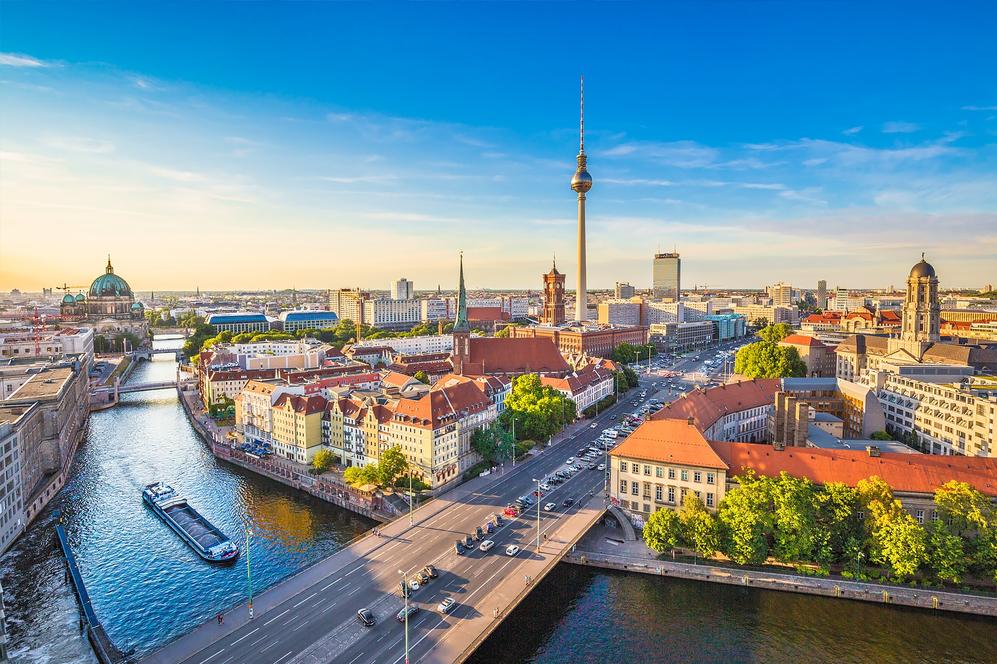
Here’s a crucial detail: Stalin feared that Berlin, because of its Western sectors, was a constant threat. It was more than just a city; it was a source of Western power embedded deep inside Soviet-controlled territory. That uncomfortable fact alone motivated Stalin to try drastic measures.
Preventing a Western West Germany
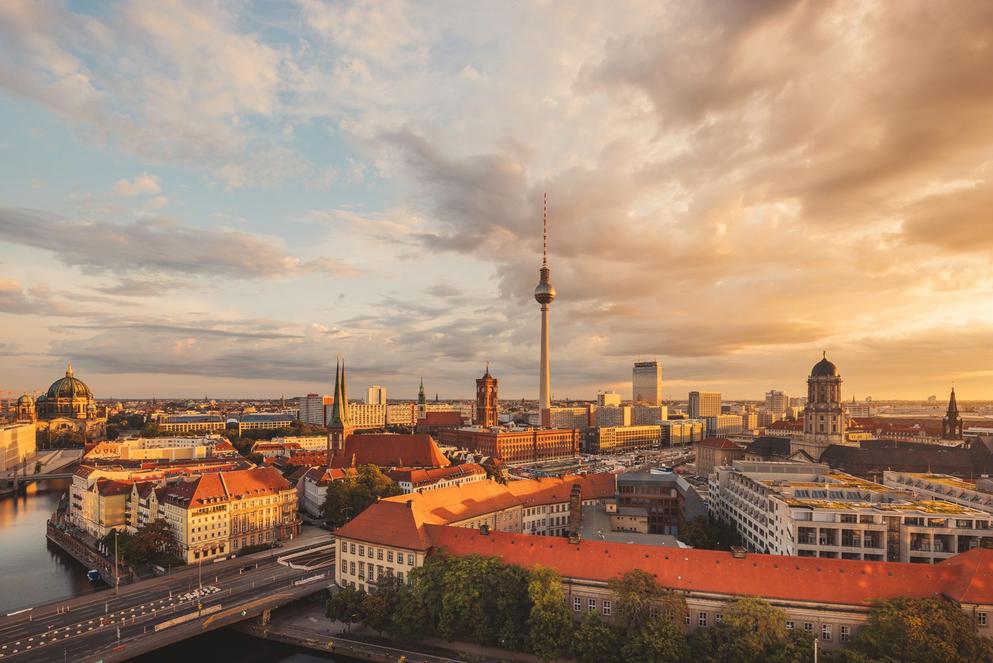
A major Soviet target was clear: limit the growth of a West German state allied with the Western Bloc. The West had plans—serious plans—to revive Germany economically and politically, turning it into a strong player against communism. Soviet leaders couldn’t swallow this. So, they started by blocking access. No trains, no roads, no canals—Berlin was cut off.
Why? To force the Allies into reversing the currency reform. That reform introduced the Deutsche Mark in Western zones—a clever move by the Allies. It promised economic stability, a stark contrast to the Soviet-dominated East where the Reichsmark had been devalued continually.
Currency Wars and Economic Control
The currency reform was a spark in a powder keg. The Soviets insisted on a single currency throughout Germany to keep the whole area financially tied together—meaning West Berlin would remain connected to the USSR’s sphere economically. Western powers, however, wanted their own currency to build an independent and stable West Germany.
Stalin’s move to debase the Reichsmark initially kept Germany’s economy shaky, ensuring no rise of a strong West German state. Enter the Deutsche Mark, which promised economic rebuilding, but to Moscow, it was a red flag waving “division ahead.” The blockade was an attempt to derail the process completely.
Undermining Western Credibility
Aside from economics and geography, Stalin had another card to play: propaganda and power projection. He believed the blockade would be a masterstroke. Why? Because the Western airlift—though heroic—was expensive, complicated, and seen as a desperate act.
Stalin assumed the Western powers would buckle under pressure. If Berlin fell, it would show Europe and the world that the West lacked resolve. Smaller countries might then lean toward the Soviet Union, feeding communist ideology across the continent.
The Soviet Tactics: Cutting More Than Just Supplies
Stalin didn’t mess around. The blockade wasn’t subtle. The Soviets stopped electricity and water supplies to West Berlin, fined-tuned a squeeze on public transport, and aggressively cut food rations. Each move chipped away at morale. Logistically, they closed all routes—road, rail, canals—into West Berlin from the Western zones.
The goal? Make life so miserable that West Berlin would collapse under pressure, forcing Western Allies to back down.
Different Perspectives: A Distraction Theory?
An intriguing alternative view comes from Pavel Sudoplatov’s memoirs. He suggests the blockade was also a smokescreen. While Europe fixated on Berlin, Stalin might have been diverting Western attention from Mao’s advancing victories in China. If true, the blockade wasn’t just a local power move but part of broader global chess.
What Can We Take Away?
The Berlin Blockade’s goal was multifold yet sharply focused: keep Germany weak and divided, destroy Western influence within the Soviet zone, stop the birth of a new West Germany, and make the West look powerless.
But it also highlights a fascinating historical irony. Stalin’s gamble failed spectacularly. The Western airlift didn’t just sustain West Berlin—it boosted Western morale and credibility, built NATO’s resolve, and sped up the division of Germany. From a blockade meant to show Soviet strength came a clear demonstration that the West wouldn’t easily quit.
How Does This Matter Today?
The Berlin Blockade teaches vital lessons about power, resilience, and the risks of geopolitics. It reminds us how vital economic control and political alliances are in shaping global events. It spotlights the lengths a power might go to protect its sphere of influence—and how determination can overcome hardship.
Next time you hear “Berlin Blockade,” think of it as more than a Cold War flashpoint. It was a masterclass in geopolitical strategy, economic warfare, and the human spirit’s capacity to endure under siege.
